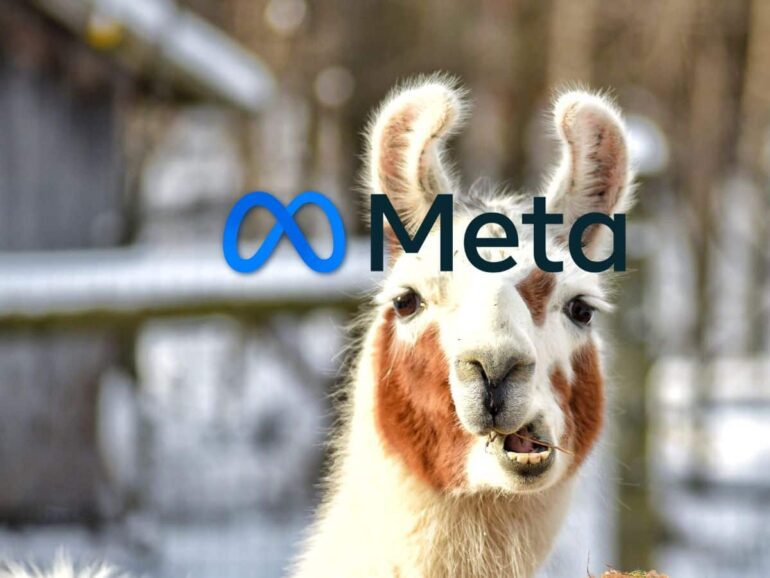TL;DR:
- Meta, the parent company of Facebook, has introduced Llama 2, an advanced AI system designed to rival OpenAI’s ChatGPT and Google’s Bard.
- Llama 2 is a free and open-source AI model that enables developers and organizations to build powerful AI-powered tools and experiences.
- The new version, Llama 2, has been trained on two trillion tokens and offers double the context length of its predecessor.
- Llama 2 models have undergone fine-tuning with over one million new human annotations to enhance output quality.
- Accessible through platforms like Microsoft Azure, Amazon Web Services (AWS), and Hugging Face, Llama 2 provides developers with seamless integration and deployment options.
- Llama 2 surpasses other open-source language models in external benchmarks, showcasing its proficiency in reasoning, coding, and knowledge tests.
- Meta’s commitment to openness and transparency is reinforced by its decision to open-source Llama 2, allowing external researchers to contribute and address biases and toxicity.
- The Llama Impact Challenge encourages public, non-profit, and for-profit entities to utilize Llama 2 in solving environmental and educational challenges.
Main AI News:
In a bold move to assert its dominance in the artificial intelligence (AI) arena, Meta, the parent company of Facebook, has unveiled Llama 2, an advanced AI system set to rival OpenAI’s ChatGPT and Google’s Bard. Llama 2 represents Meta’s commitment to pushing the boundaries of AI technology and fostering innovation in the field. But what exactly is Llama 2, and what sets it apart from its competitors?
According to Meta CEO Mark Zuckerberg, Llama 2 is the next generation of Meta’s AI large language model, developed in collaboration with Microsoft. In an exciting announcement on July 18, Zuckerberg revealed that Llama 2 would be freely available for both research and commercial use. This strategic partnership with Microsoft demonstrates Meta’s dedication to fostering an inclusive and collaborative AI community.
Llama 2 is specifically designed to empower developers and organizations, offering them the tools and capabilities to create cutting-edge AI-powered solutions and experiences. Meta has been astounded by the overwhelming demand for Llama 1, with over 100,000 requests for access to the large language model. Now, with the introduction of Llama 2, Meta is ready to take the next step by making this powerful technology open source and accessible to all.
So, what makes Llama 2 so revolutionary? First and foremost, Llama 2 boasts an impressive training data volume, having been trained on a staggering two trillion tokens. Not only that, but it also possesses double the context length of its predecessor, Llama 1. This extended context enables Llama 2 to deliver even more accurate and contextually relevant outputs, setting it apart from other language models in the market.
Furthermore, the development of Llama 2 involved training the Llama-2-chat models on over one million new human annotations. This meticulous fine-tuning process ensures that Llama 2 delivers outputs of exceptional quality. Meta has also made it easier for developers by allowing Azure customers to effortlessly fine-tune and deploy the 7B, 13B, and 70B-parameter Llama 2 models on the Azure platform.
In terms of data usage, Meta has taken a slightly different approach from Llama 2. While previous models required large-scale ingestion of digitized writings, such as books, news articles, and social media feeds, the latest model incorporates a mix of publicly available data sources. Notably, data from Meta’s own products and services have been excluded from the training process. Meta’s commitment to data privacy is evident as it has diligently removed data from websites known to contain personal information about individuals.
Llama 2 can be accessed through various platforms, ensuring widespread availability. Developers utilizing Microsoft Azure can easily access Llama 2 through the Azure AI model catalog, harnessing the power of cloud-native tools for content filtering and safety features. Additionally, Llama 2 has been optimized to run seamlessly on Windows, facilitating a streamlined workflow for developers aiming to create generative AI experiences across different platforms. Llama 2 is also accessible through Amazon Web Services (AWS), Hugging Face, and other leading providers.
What truly sets Llama 2 apart is its openness and accessibility. While other language models like ChatGPT and Bard are not open source, Llama 2 is freely available for research and commercial use. Meta proudly states that Llama 2 outperforms other open source language models in numerous external benchmarks, demonstrating its superiority in reasoning, coding, proficiency, and knowledge tests. By making Llama 2 open source, Meta aims to drive innovation, enhance safety and security, and enable a wider community of developers to contribute to its advancement.
Meta’s commitment to transparency extends beyond the accessibility of Llama 2. In the past, the company has made efforts to provide researchers with insights into the data and code used to build its AI systems. Meta believes that this openness enables external researchers to identify and mitigate biases and toxicity inherent in AI systems. Mark Zuckerberg emphasized this point in a recent Facebook post, stating that open-source software fosters innovation and improves safety and security.
As part of its ongoing mission to address critical global challenges, Meta has introduced the Llama Impact Challenge. This initiative aims to mobilize a community of innovators dedicated to leveraging Llama 2 to tackle environmental issues, education gaps, and other important societal problems. Meta plans to release the challenge rules before its commencement, encouraging participation from public, non-profit, and for-profit entities.
Conclusion:
The introduction of Llama 2 by Meta signifies a significant development in the AI market. With its impressive training data volume, enhanced context length, and focus on quality output, Llama 2 presents formidable competition to existing language models like ChatGPT and Bard. By making Llama 2 open source, Meta promotes innovation, safety, and security while inviting a wider community of developers to contribute to its advancements. The availability of Llama 2 through various platforms further strengthens its market presence and accessibility. Overall, Meta’s strategic move with Llama 2 sets the stage for increased innovation and collaboration in the AI landscape.

